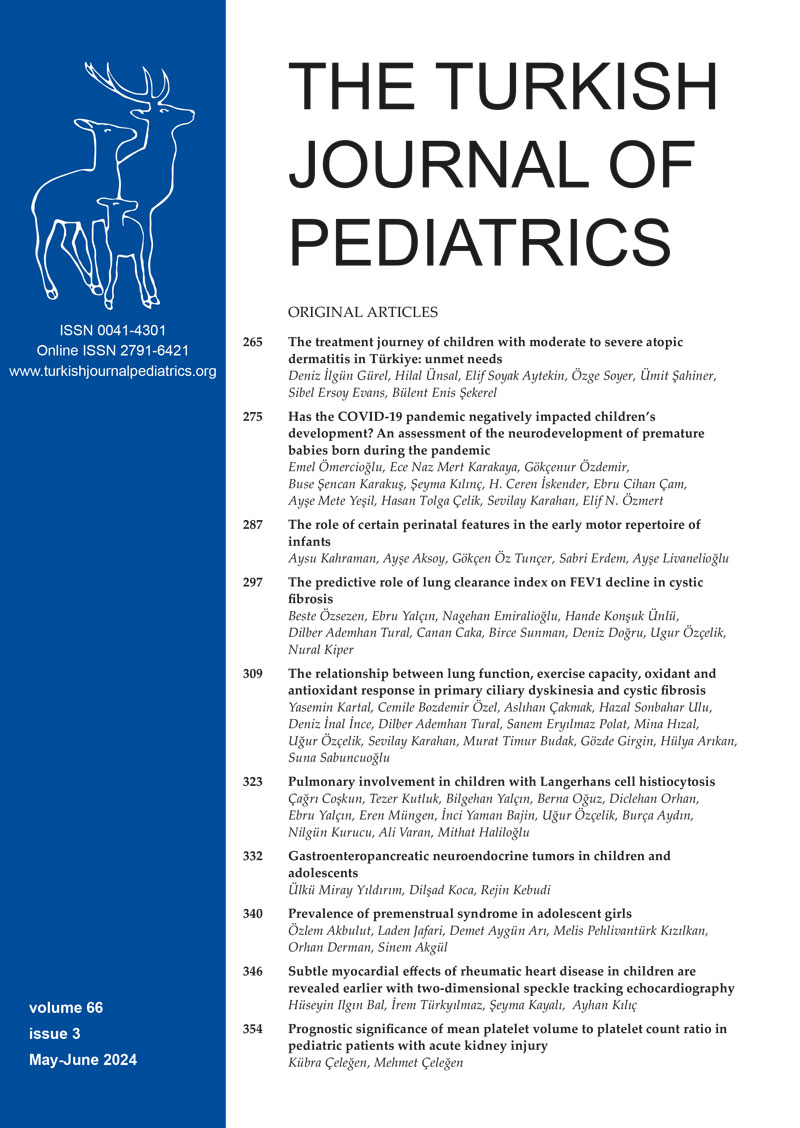Abstract
Background. Myxedema coma is a rare, but life-threatening endocrinological emergency. Myxedema is characterized by altered mental status, and is accompanied by hypotension, bradycardia, hypothermia, bradypnea, hyporeflexia, hyponatremia, and hypoglycemia, all stemming from reduced metabolism due to severe hypothyroidism. Additionally, patients may exhibit signs of low cardiac output, edema in the extremities, peripheral circulatory disturbances, shock, and the development of pericardial and pleural effusions, ultimately leading to confusion and coma. We present a successfully treated case of severe myxedema coma with recurrent pericardial effusion and hypotensive shock. This case is characterized by an unusual clinical presentation and required a distinct treatment strategy highlighting its exceptional rarity.
Case. A 2-year-old boy with Down syndrome presented with recurrent pericardial effusion attributed to medication non-adherence. The critically-ill patient, experiencing a severe cardiogenic shock required mechanical ventilation and inotropic infusions in the pediatric intensive care unit. Elevated thyroid stimulating hormone (TSH), and low free T4 (fT4) and free T3 (fT3) levels prompted consideration of myxedema coma. Upon reviewing the patient’s medical history, it was ascertained that he had an ongoing diagnosis of primary hypothyroidism, and exhibited non-adherence to the prescribed treatment regimen and failed to attend scheduled outpatient clinic appointments for follow-up assessments. The treatment plan, devised by the pediatric endocrinology team, included the peroral administration of L-thyroxine (L-T4) at a dose of 50 micrograms per day. After beginning regular oral L-T4 treatment, a gradual improvement in the patient’s condition was observed. Notably, by the 15th day of oral therapy, the patient had made a full recovery. Contrary to the recommended intravenous treatment for myxedema coma, this patient was successfully treated with oral levothyroxine, due to the unavailability of the parenteral form in Türkiye.
Conclusions. This case report presents an instance of non-adherence to L-T4 therapy, which subsequently progressed to severe myxedema coma. Changes in neurologic status and hemodynamic instability in a patient with a history of hypothyroidism should raise the concern of nonadherence and, though rare, myxedema coma should be in the differential diagnosis.
Keywords: Hypothyroidism, recurrent myxedema coma, cardiogenic shock, levothyroxine, child
References
- Hampton J. Thyroid gland disorder emergencies: thyroid storm and myxedema coma. AACN Adv Crit Care 2013; 24: 325-332. https://doi.org/10.1097/NCI.0b013e31829bb8c3
- Divecha CA, Tullu MS, Deshmukh CT, Karande S. Myxedema coma in a pediatric patient with down syndrome. J Pediatr Intensive Care 2020; 9: 70-73. https://doi.org/10.1055/s-0039-1698812
- Mathew V, Misgar RA, Ghosh S, et al. Myxedema coma: a new look into an old crisis. J Thyroid Res 2011; 2011: 493462. https://doi.org/10.4061/2011/493462
- De Sanctis V, Soliman A, Daar S, et al. The Myxedema coma in children and adolescents: a rare endocrine emergency - personal experience and review of literature. Acta Biomed 2021; 92: e2021481. https://doi.org/10.23750/abm.v92i5.12252
- Fort P, Lifshitz F, Bellisario R, et al. Abnormalities of thyroid function in infants with down syndrome. J Pediatr 1984; 104: 545-549. https://doi.org/10.1016/s0022-3476(84)80544-2
- Iughetti L, Predieri B, Bruzzi P, et al. Ten-year longitudinal study of thyroid function in children with Down’s syndrome. Horm Res Paediatr 2014; 82: 113-121. https://doi.org/10.1159/000362450
- Brent GA. Mechanisms of thyroid hormone action. J Clin Invest 2012; 122: 3035-3043. https://doi.org/10.1172/JCI60047
- Song Y, Yao X, Ying H. Thyroid hormone action in metabolic regulation. Protein Cell 2011; 2: 358-368. https://doi.org/10.1007/s13238-011-1046-x
- Bridwell RE, Willis GC, Gottlieb M, Koyfman A, Long B. Decompensated hypothyroidism: a review for the emergency clinician. Am J Emerg Med 2021; 39: 207-212. https://doi.org/10.1016/j.ajem.2020.09.062
- Thompson MD, Henry RK. Myxedema coma secondary to central hypothyroidism: a rare but real cause of altered mental status in pediatrics. Horm Res Paediatr 2017; 87: 350-353. https://doi.org/10.1159/000449223
- Ortiga-Carvalho TM, Chiamolera MI, Pazos-Moura CC, Wondisford FE. Hypothalamus-pituitary-thyroid axis. Compr Physiol 2016; 6: 1387-1428. https://doi.org/10.1002/cphy.c150027
- Mebis L, van den Berghe G. The hypothalamus-pituitary-thyroid axis in critical illness. Neth J Med 2009; 67: 332-340.
- Chahine J, Jedeon Z, Chang KY, Jellis CL. Pericardial manifestations of thyroid diseases. Curr Cardiol Rep 2022; 24: 893-904. https://doi.org/10.1007/s11886-022-01711-7
- Root JM, Vargas M, Garibaldi LR, Saladino RA. Pediatric patient with altered mental status and hypoxemia: case report. Pediatr Emerg Care 2017; 33: 486-488. https://doi.org/10.1097/PEC.0000000000000722
- Zhu Y, Qiu W, Deng M, Zhu X. Myxedema coma: a case report of pediatric emergency care. Medicine (Baltimore) 2017; 96: e6952. https://doi.org/10.1097/MD.0000000000006952
- Wankanit S, Mahachoklertwattana P, Anantasit N, Katanyuwong P, Poomthavorn P. Myxoedema coma in a 2-year-old girl with untreated congenital hypothyroidism: case report and literature review. J Paediatr Child Health 2019; 55: 707-710. https://doi.org/10.1111/jpc.14339
- Leonardi A, Penta L, Cofini M, Lanciotti L, Principi N, Esposito S. Pericardial effusion as a presenting symptom of hashimoto thyroiditis: a case report. Int J Environ Res Public Health 2017; 14: 1576. https://doi.org/10.3390/ijerph14121576
- Roberts CG, Ladenson PW. Hypothyroidism. Lancet 2004; 363: 793-803. https://doi.org/10.1016/S0140-6736(04)15696-1
- Kwaku MP, Burman KD. Myxedema coma. J Intensive Care Med 2007; 22: 224-231. https://doi.org/10.1177/0885066607301361
- Pinto-Valdivia M, Vásquez-Kunze S, Pinto-Valdivia JL, Villena-Chávez J. Coma mixedematoso y midazolam: reporte de caso. Rev Méd Hered 2012; 19; 171-174. https://doi.org/10.20453/rmh.v19i4.960
- Akın Kağızmanlı G, Demir K. Interpretation, differential diagnosis, and clinical implications of abnormal thyroid function tests in children. Trends in Pediatrics 2023; 4: 61-71. https://doi.org/10.59213/TP.2023.53215
- Hallett TC, Solomon B, Ciener DA. Congenital hypothyroidism presenting as myxedema coma in a teenager. Am J Emerg Med 2021; 45: 688.e1-e2. https://doi.org/10.1016/j.ajem.2021.01.012
- Jonklaas J, Bianco AC, Bauer AJ, et al. Guidelines for the treatment of hypothyroidism: prepared by the American Thyroid Association Task Force on thyroid hormone replacement. Thyroid 2014; 24: 1670-1751. https://doi.org/10.1089/thy.2014.0028
- Popoveniuc G, Chandra T, Sud A, et al. A diagnostic scoring system for myxedema coma. Endocr Pract 2014; 20: 808-817. https://doi.org/10.4158/EP13460.OR
Copyright and license
Copyright © 2024 The Author(s). This is an open access article distributed under the Creative Commons Attribution License (CC BY), which permits unrestricted use, distribution, and reproduction in any medium or format, provided the original work is properly cited.















